Schedule / Classes
Classes Offered
Here are the classes that Nicolai presents as individual lectures.
The host selects the classes they would like from this list.

Sanskrit Basics For Yogis
Fundamentals of Pronunciation
The science of yoga is filled with Sanskrit vocabulary. Teachers and practitioners of yoga, Ayurveda, or meditation can benefit from learning how to pronounce Sanskrit with correct breath, resonance, rhythm and tongue position. We will talk about Sanskrit as a language, learn pronunciation basics, and practice reading many common yoga terms and posture names.

Origins of Yoga
History and Classical Texts of Yoga with Optional Vedic Fire Ceremony
Where did yoga come from? What is the larger context of yoga? Yoga originally derives from the shruti (“heard”) wisdom elucidated in the Vedas and Upanishads. The multifarious aspects of yoga are related and ultimately stem from the 4 Vedas. Where do Sanskrit, mantra, tantra, Samkhya, and Ayurveda fit in? Exploring the structure and basic content of primary yoga texts such as the Bhagavad Gita, Hatha Yoga Pradipika, Gheranda Samhita, and Shiva Samhita can give us a broader view of yoga. A Vedic Fire Ceremony (Homa and Agni Hotra), in which everyone can offer something into the fire while chanting a mantra, can be included if desired. It is best done at sunrise or sunset.
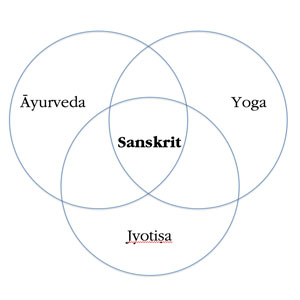
Sanskrit: Foundation of Indian Sciences
Common Principles among Yoga, Ayurveda and Jyotisha
Understanding the Sanskrit language is fundamental to exploring the sciences of Yoga, Ayurveda (East Indian Medicine) and Jyotisha (Vedic Astrology). Numerous words and concepts overlap these disciplines and reveal how Vedic ideas link them together. We will discuss common underlying principles, perspectives on the body, mind and spirit, and the use of mantra for healing among these three sister sciences from India. Chanting Sanskrit verses from all three disciplines will allow us to experience their energy directly.

Triguna: Sattva, Rajas and Tamas
Samkhya Principles that Underly Yoga
The Samkhya view of creation is based upon a conscious witness (the seer) which pervades the unconscious manifest world (the seeable). Ayurveda, the Yoga Sutras and the Bhagavad Gita all originate from Samkhya, which also defines three energetics that are present in every aspect of the material world. How do these principles apply to the mind, action and nutrition? Understanding these gunas sheds light on the yogic world-view. Original Sanskrit verses will be chanted, translated and discussed.

How to Chant in Sanskrit
Fundamentals of Chanting
Sanskrit has been chanted in India continuously for at least 6000 years. Many different styles of chanting have developed, including Vedic, bija mantra, shloka, stotra and kirtana. You will experience the different vibrations of each style while chanting verses from the Rig Veda, Yoga Sutras, Shankaracharya and the Bhagavad Gita.
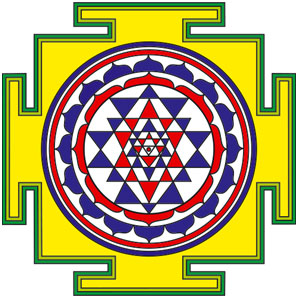
Mantra Recitation
Exploration into Sacred Sounds
Mantra is a vibration that produces an energetic effect. They can range from tiny, single-syllable seed mantras whose effect is quite specific, to large shloka verses that produce a more general effect. We will practice many different kinds of mantra, and unpack their constituent sounds to discover how they work.

Vedic Chant
Ancient Sounds of Mystery
Tap into the power of Vedic sound by chanting certain mantras exactly as they have been done for thousands of years. Pay homage to earth, water, fire, air, space, sun and moon which support, nourish and influence us every day. This is the oldest system of organized chanting and has been used to preserve the Vedas orally for millenia. Up to three Vedic verses will be taught and practiced.
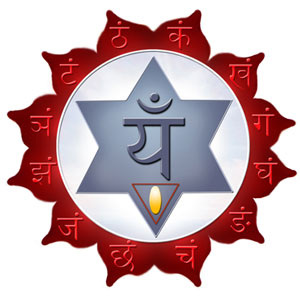
The Elemental Chakras
Subtle Body Evolution
After an explanation of terms like nadi, chakra, and kundalini shakti, we will cover each chakra’s primary characteristics as stated in the ancient Sanskrit text titled “Shat Chakra Nirupana.” These include the chakra’s element and what it represents, colors of each part of the chakra, the element’s shape and primary syllable, and all secondary syllables that support it. Using verses from the Hatha Yoga Pradipika we will discuss the theory of awakening the dormant kundalini and how it flows upwards through the sushumna nadi. We then apply the theory by chanting and resonating the seed (bija) and petal sounds from the root chakra through the crown, focusing our attention and breath at the location of each cakra.

Asana Names and Stories
Pronunciation of and Reason for Posture Names
The Sanskrit names for yoga postures provide a standard reference that can be used anywhere in the world, so for teachers of yoga it is important to know them. When the asana names are vocalized with correct pronunciation and rhythm, it adds a whole new dimension to the postures. We will also explore the reason or story behind the name of each posture.

Relax, Receive and Restore
Imbibing Sacred Chant in Restorative Postures
You will be guided through a slow and gentle restorative asana sequence. Resting in each posture, your heart and mind become quiet, open and receptive. Nicolai will then recite ancient and powerful Sanskrit chants. Sound directly affects the subtle body via the nervous system. Your body, breath and mind will imbibe the sacred vibrations as if drinking nectar.

The Gāyatrī Mantra
Honoring the Inner and Outer Sun
One of the most chanted prayers of all time, the Gāyatrī Mantra invokes the Sun as the creator and source of life. The Sun also symbolizes our inner sun, the divine light of awareness and knowledge that can guide us to act with love and compassion. We will explore this sacred mantra in great depth, and chant it in the original Vedic way together.
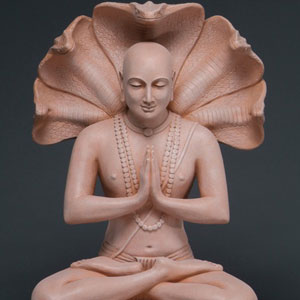
Overview of the Yoga Sutras
History, Structure and Key Concepts
In what context did Patanjali compose his masterpiece called Patanjala-Yoga-Darshanam, commonly referred to as the Yoga Sutras? Taking a bird’s-eye view, we will examine its history and structure, then discuss what the Yoga Sutras is about in general, focusing on certain key concepts and the overall purpose of this monumental work.

Yoga Sutras Unraveled : 8 Limbs Part 1
Outer Behavior
Yamas, Shaucha and Santosha
How we interact with others affects our heart-mind and those around us. Cultivating ethical behavior is essential for a civil society to flourish. Part and parcel with healthy social relationships is taking care of oneself.

Yoga Sutras Unraveled : 8 Limbs Part 2
Personal Practices
Kriya-yoga, Asana and Pranayama
The last three niyama-s (personal practices) make up a synergistic triad of tools that support the other limbs of yoga, and are necessary for bringing about real, lasting change and cultivating an inner orientation. Refining and unblocking the body and breath prepare us for our journey inward.

Yoga Sutras Unraveled : 8 Limbs Part 3
Turning Inward
Pratyahara and Samyama
Focusing our attention in a single place centers our heart-mind, ending outer sensory distractions and moving us deep into our inner light of awareness. The final four limbs cultivate a sattvic heart-mind and a higher state of consciousness.

Yoga Sutras Unraveled : Yoga as Nirodha
Examining Patanjali’s Definition of Yoga
Yoga, Citta, Vrtti, Nirodha, Abhyasa, and Vairagya
The first 16 sutras of chapter 1 discuss what yoga is and what is required of it as a process and a state. We will discuss all relevant terms in detail, including all related sutras, to be able to come to an understanding of what yoga is and is not. A thorough presentation of the components and mechanics of the citta as our heart-mind field of consciousness will provide a foundation for this exploration of yoga as nirodha.

Yoga Sutras Unraveled : Understanding Suffering
Learning from Obstacles and Pain
Pain and suffering can reveal otherwise hidden aspects of ourselves and provide an opportunity to move forward and learn from the past. The Yoga Sutras describe various obstacles that can cause us to suffer or distract our attention. Antaraya-s can disrupt our practice, vrtti-s can distract our attention, and klesha-s cause us to react suddenly, creating more negative karma for ourselves and keeping us from attaining real happiness. By understanding these aspects of ourselves we move a step closer to enabling a quiet and still heart-mind, and making conscious, appropriate and well-thought-out choices and actions. Future suffering can be reduced or avoided by exercising keen discernment and practicing what Patanjali calls kriya-yoga. Individual sutras will be chanted, translated from the Sanskrit and then discussed as a group.

Ayurveda 1
Introduction to Ayurveda
Ayurveda is a profound system of wholistic medicine from India dating back at least 5000 years. Treating every person as a unique blend of qualities, Ayurveda emphasizes the prevention of disease through a diet and lifestyle appropriate to each individual’s unique physical and mental constitution. We will translate many shlokas directly from Ayurvedic texts.
Topics covered include:
- Samkhya philosophy of creation and emergence of the 5 elements
- 6 tastes, 20 attributes (ex. hot/cold) and 3 doshas
- how to determine your physical and mental constitution
- healthy daily habits

Ayurveda 2
Subdoshas, Digestion and Disease
Continuation of Ayurveda 1
Topics covered include:
- subdosha locations, functions, etc.
- the seven tissues (dhatu-s), how they form from food
- process of digestion
- stages of disease
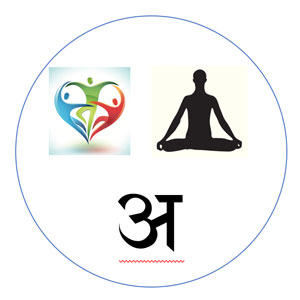
Yoga and Ayurveda Parallels
Integrating Two Powerful Healing Sciences
The natural principles of Ayurveda are integrated into certain systems of yoga. This synergistic combination provides powerful tools for radiant health and personal self-development. Just as diet and lifestyle can be tailored to one’s individual constitution, so too asana and pranayama can be adapted to one’s unique body, breath and mind. Through lecture, discussion and yoga practicum, students will learn and experience how to ascertain their current state of health, consciously set intentions and then make appropriate choices. Ayurvedic nutrition and lifestyle as well as principles for adapting yoga practice to the individual will be covered, drawing from Sanskrit texts such as the Ashtanga Hridayam, Yoga Sutras and Yoga Rahasya.
